20-21 September 2022
This morning we depart lovely Lake Issyk Kul and retrace some of our route west before turning north to Bishkek. There are not a lot of roads here, basically up and down the valleys with little more than hiking trails over the mountains. I think locals like it that way.
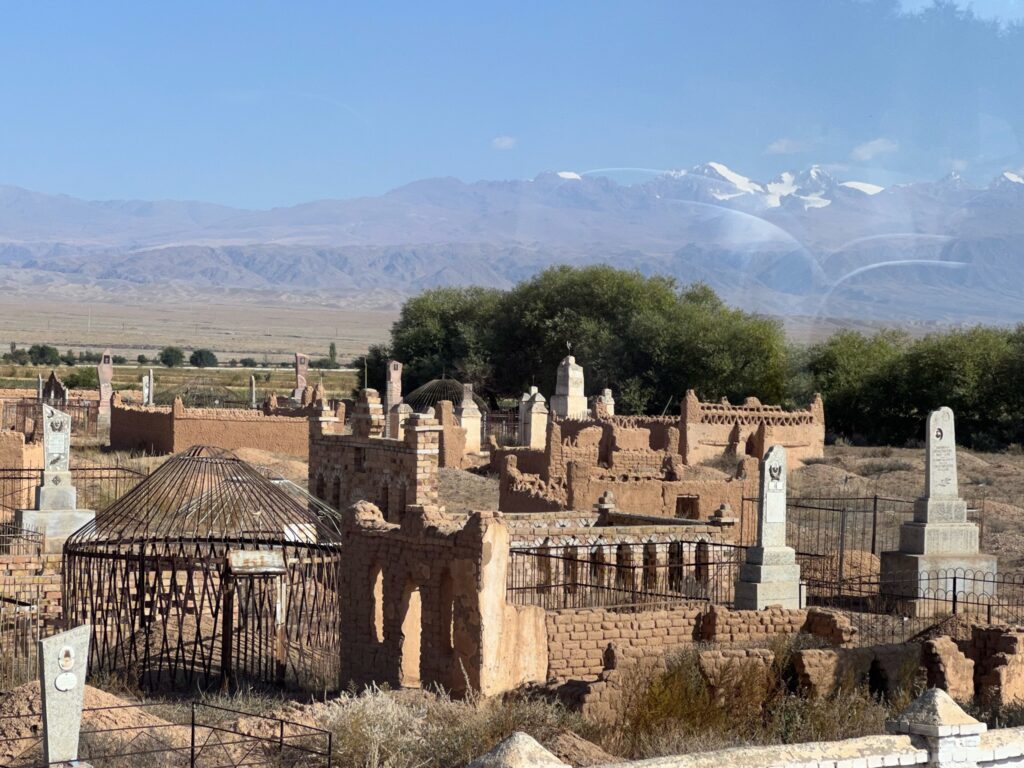
Along this 160-mile route, following the twisting Chu River and running parallel to the Kazakhstan border for miles, is the true land of the Kyrgyz: Muslim cemeteries, mosques, small villages, farmers, smelly toilets, interesting and decorative landslide barriers, and truck stops. At a border crossing into Kazakhstan, trucks are lined up for miles. No one seems to care that bureaucracy is creating chaos with goods and services. A trucker could sit in line for days.
The drive allows time to observe and to learn more about Kyrgyzstan from our guide, who lives in Bishkek. I do not see this country as “poor” but as poorer than some of it neighbors. They have little to export and run a deficit each year. Potatoes and apples and felt won’t pay the bills. If they could sell rocks, Kyrgyzstan would be one of the richest countries in the world. Little local tables line the road selling apples and honey, potatoes or canned pickled foods. As we near the border, jugs of gasoline are seen. Petrol is relatively inexpensive at about 75¢ a liter. Desil is about a dollar. However, the government has discovered one economic path: tourism.
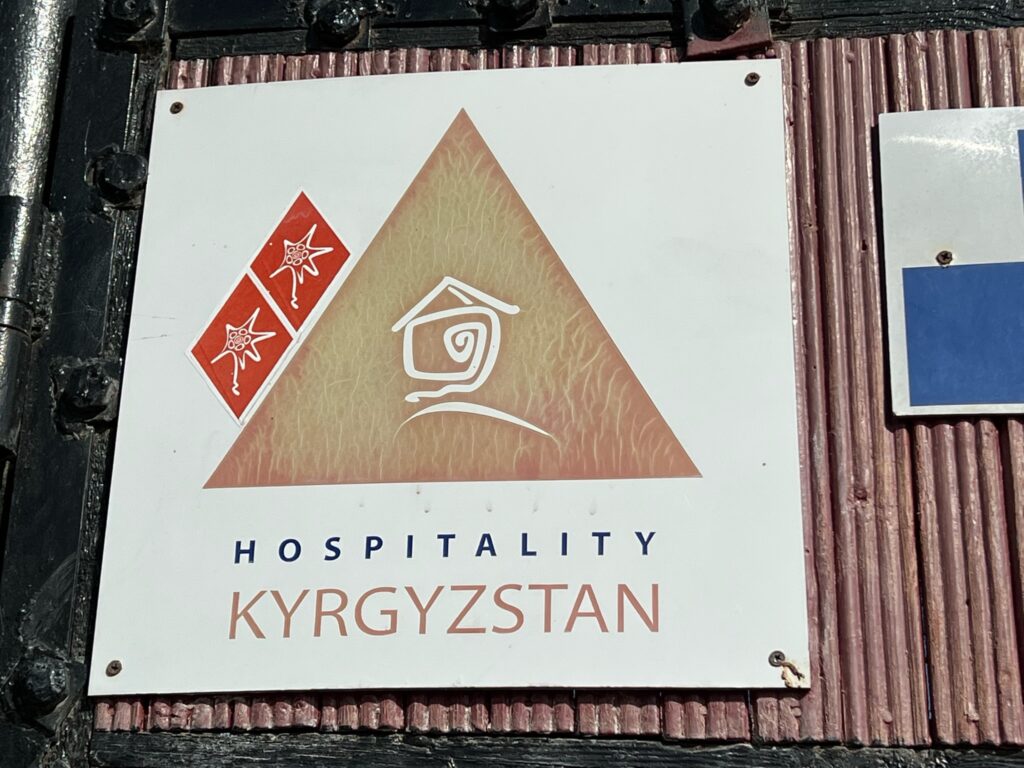
The government is trying to bring its people into the 21st century. Working with advisors out of Switzerland, Community Based Tourism, CBT, is developing. This is where locals like the felt lady comes in along with those who rent rooms, provide meals, and open small shops for selling local goods. It seems to be working. It just took some convincing of locals that who they are and how they live and what they make is of interest to us crazy tourists.
Our guide talks about marriage. One can marry for love or by arrangement between families, or by the practice of kidnapping a bride. The last is still practiced in the remote rural villages and no matter how it is spun, it is not a tradition that sounds healthy. There are a few eyes spotting my niece but no arrangement or kidnapping is welcome. I doubt any girl, no matter how poor, wants to meet a husband that way. While not rape, it is still the taking by force with few alternatives for the “happy bride.”
Our drive, as usual, is slow. Speed is monitored by cameras and also by the cows and horses wandering across the roads. I am told that cows come in two modes: 2 and 4 wheel. Regular cows are 2-wheel and just go forward. More fortunate farmers may have 4-wheel Yaks. Evidently Yaks can also back up which can be pretty handy on these narrow mountain roads.
We stop for quick photos of a Muslim Cemetery, a little better maintained than most I have seen. The monuments are varied, some with photos. But the cemetery itself, while large, is mostly rocks and weeds. After a year, families see no reason to continue to care for or visit so cemeteries and stones are ill-kept. Most of these cemeteries are a product of Soviet times; today’s Muslim does not mark or identify their loved ones’ grave site.
We revisit the “felt lady” to use her toilets. She is a successful example of Community Based Tourism. Someone in the group purchased for 500 Som the piece she created during our last stop. It appears most things can be purchased for under 500 Som. That is about $6.
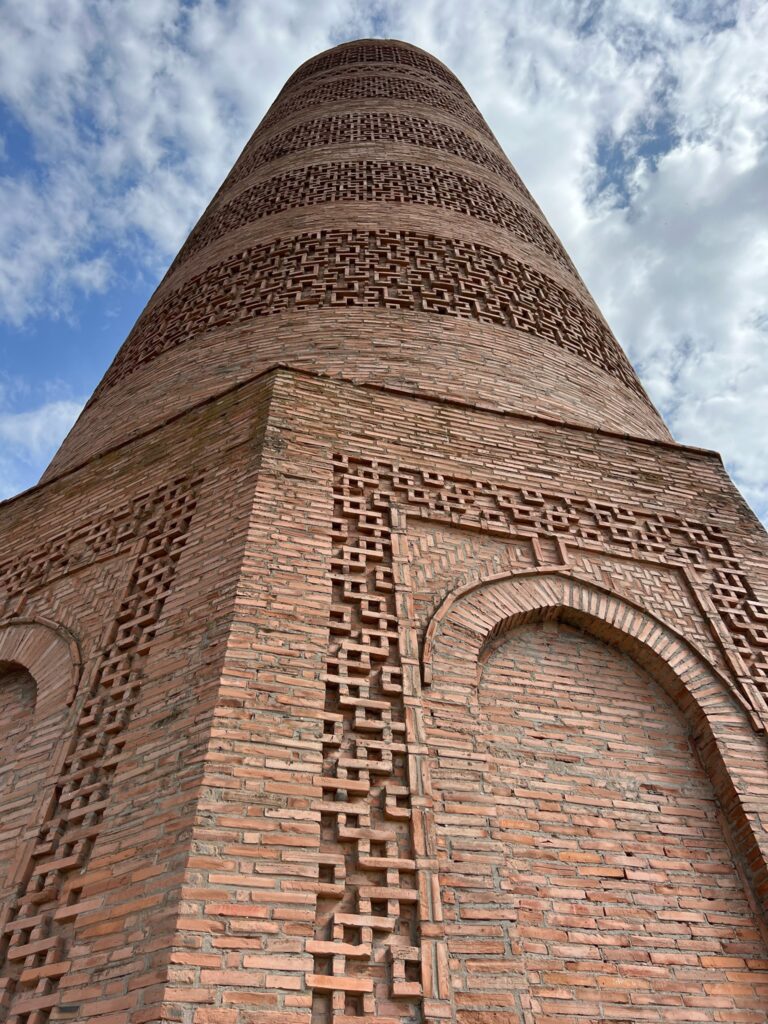
After lunch at the home of a local who discovered CBT as a handy retirement income, we stop at Burana Tower and Archaeological Museum, located on the site of the lost city of Balasagun, a 10th century caravan town. Temperatures are hot and sun is blasting. Sticking up some 82 feet above the valley floor and backdropped by mountains and snow-covered peaks, this minaret is a leftover from Karakhanid Khanate which ruled these lands in the 9th century. No, it was not the tears of a grieving father which destroyed the top of the tower. Made of bricks, the tower has suffered earthquakes and time, reducing its original height by about 65 feet. Leaning and unstable, it is surrounded by ancient mausoleums, grave stones and interesting little-known stone “moai” type statues called balbals. I pass up climbing the steep internal winding stairway to the top. The small museum contains artifacts found in the region.
We arrive in Bishkek, Kyrgyzstan’s big capital of 750,000 people. Traffic is awful! At its best it makes Los Angeles rush hour driving a piece of cake.
And food in Kyrgyzstan? In general it is more than plentiful, tasty and well prepared. We are usually given 2-3 types of salads, huge main dishes involving rice, potatoes and meat, usually chicken. Dessert follows, many times cake. And there is lots of bread and delicious jams. Serving is another thing altogether. Don’t expect serving spoons even in a time of Covid. Not all restaurants serve alcohol.
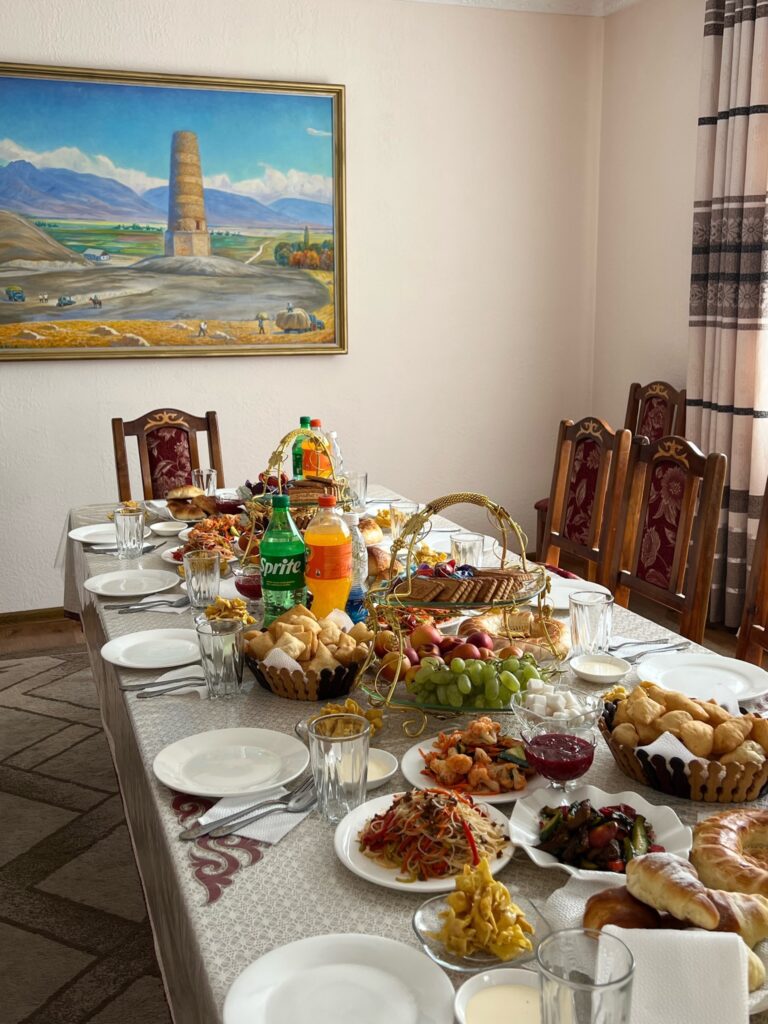
We overnight at the Golden Dragon Hotel, a characterless semi-modern abode, just down from the Baths of Aphrodite (possible massage parlor?) and close to a couple Korean restaurants. Gang Nam Restaurant is just across from the entrance. In fact, the Golden Dragon is also Korean owned, which explains the gas masks in every room. Masks are there because of a Korean requirement – they fear that North Korea will drop “the bomb!” so mask gives South Koreans time for….?
Go figure.
Morning temperatures are cool. We drive the short distance to Ata Beyit Memorial Park, or “Grave of our Father’s.” Built in 2000, the site memorializes the village’s intelligentsia who were rounded up and shot in mass by the Soviets and dumped in a mass grave here during Stalin’s 1938 Great Purge. The victims were not discovered until 1991 when the daughter of the guard here disclosed her father’s secret, one that in fear of the KGB he took to his grave, but not before disclosing the location of the mass burial to his daughter. She revealed his secret and on 30 August 1991, a state sponsored mourning ceremony for the victims was held. The following day, the independence and sovereignty of Kyrgyzstan was proclaimed. The bodies were dug up, many of them DNA identified, and collectively reinterred. A memorial plaque has the engraved names all 137 victims.
One of those buried at the site, and with a special memorial, is the Kyrgyz writer Chinghiz Aitmatov. All his life he had sought information as to what happened to his father, taken in the night by the Soviet police in 1938. It was after the remains were discovered here that Aitmatov was to learn his father’s fate. Aitmatov was instrumental in getting this memorial site built and it’s fitting that he should be buried alongside his father, Törökul.
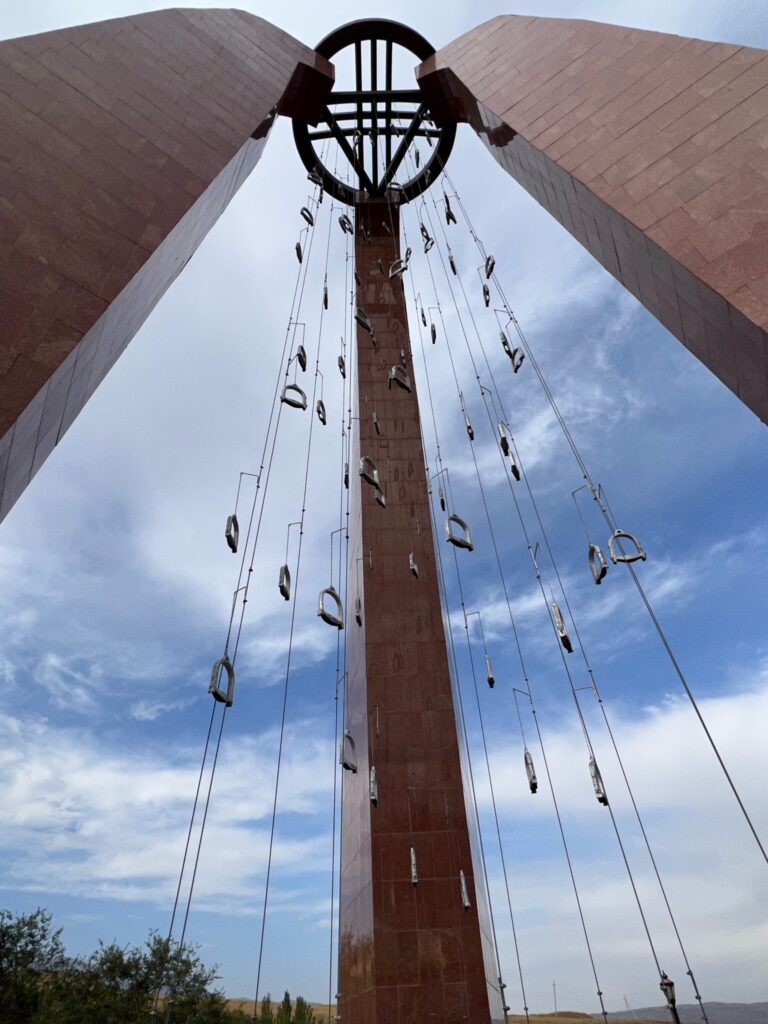
Victims of the Kyrgyz 7 April 2010 Revolution were also buried here. Individual stones, with pictures and dates, identify each victim. They were protesting the corrupt president and government in Republic Square and individually shot by snipers.
In 2016, a monument to the 1916 Urkun was added in the cemetery. The memorial consists of tall concrete pillars topped by the traditional yurt. Hanging on long chains are many decorative stirrups symbolizing the nomads and indigenous peoples who revolted against repressive acts by Russia. The Central Asia Revolt, or Urkun meaning Exodus, was sparked when the Russians tried to conscript the local Muslims into the Russian military for service for the Eastern Front in WW One. Of course, even nomads recognized the corruption of the Russian colonial regime and Tsarist colonialism. These men did not want to fight the Tsar’s war and hundreds of thousands of Kyrgyz and Kazakhs fled into China.
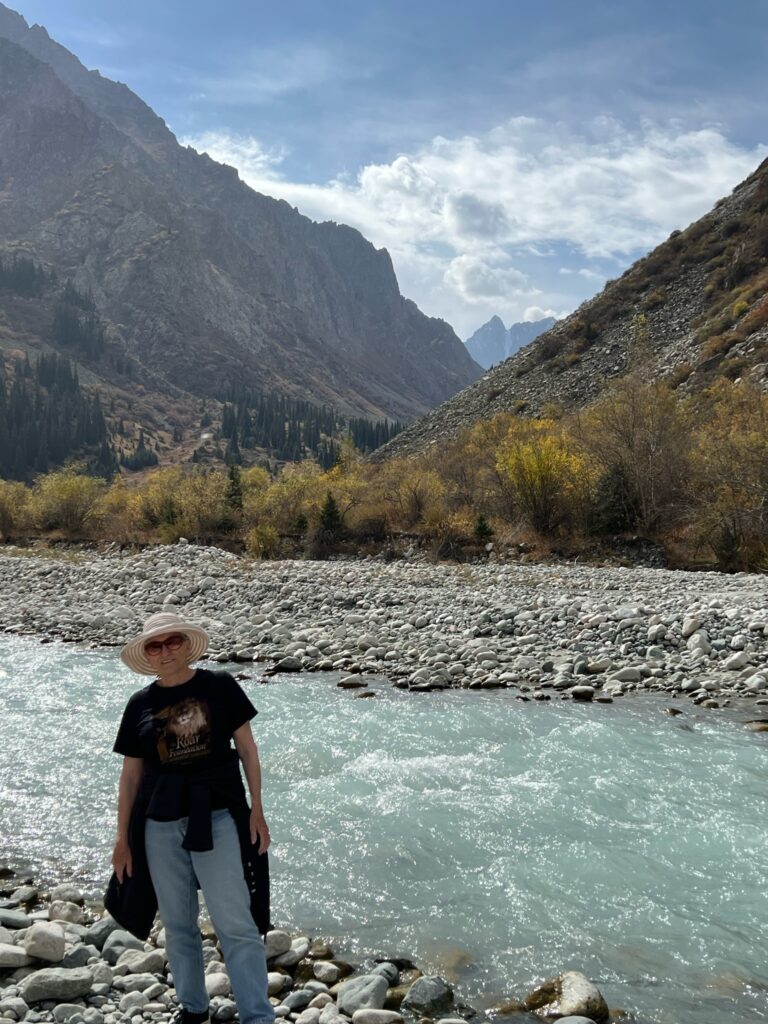
Another short drive delivers me to the beautiful Ala Archa National Park. Surrounding mountain top 9200’ and snow and glaciers can be seen among the peaks. There is a paved trail for about a half mile. It follows a rushing, turquoise stream and is shaded by pines, firs, beach and various other trees. I am told there are wolves and in higher altitudes a few snow leopards. Cute red squirrels dart about hoping for a handout.
Another huge lunch is served. I think of the starving squirrels but just cannot keep eating all this food. Salads are good but I pass on the pilaf and chicken. I won’t starve as dinner is just 6 hours away.
The afternoon finds us walking about Bishkek’s city center park with its memorials, including Lenin and Marx, government buildings and presidential offices. They have their own “White House” but it is in paint only. We visit the National History Museum and enjoy an hour with its varied exhibits. Then, on the hour, we watched the changing of the guard in the plaza. As usual the ceremony is lots of pomp and posturing: impressive big Kyrgyz flag flying in a perfect breeze, enter three very high, goose-stepping soldiers. I always have sympathy for these men as it has got to be boring standing at attention, in all weather, for an hour. A strange tilt of the head, an exchange is made, exit the old guard whose goose-stepping and stomp of foot onto the cement is for affect but surely brings sensation back to what must be numb feet by that time.
The People’s Friendship Monument is a modern, dual-stone column with bronze statues representing the Russian and Kyrgyz people. There is also a memorial to the Allied victory over Nazi Germany. The center statue represents all the mothers who waited for their loved ones to return. A bunch did not. There is not a shortage of monuments to war, sacrifice, and independence. Some of these sacrifices were as recent as the 2010 uprising to oust their corrupt president. Didn’t succeed.
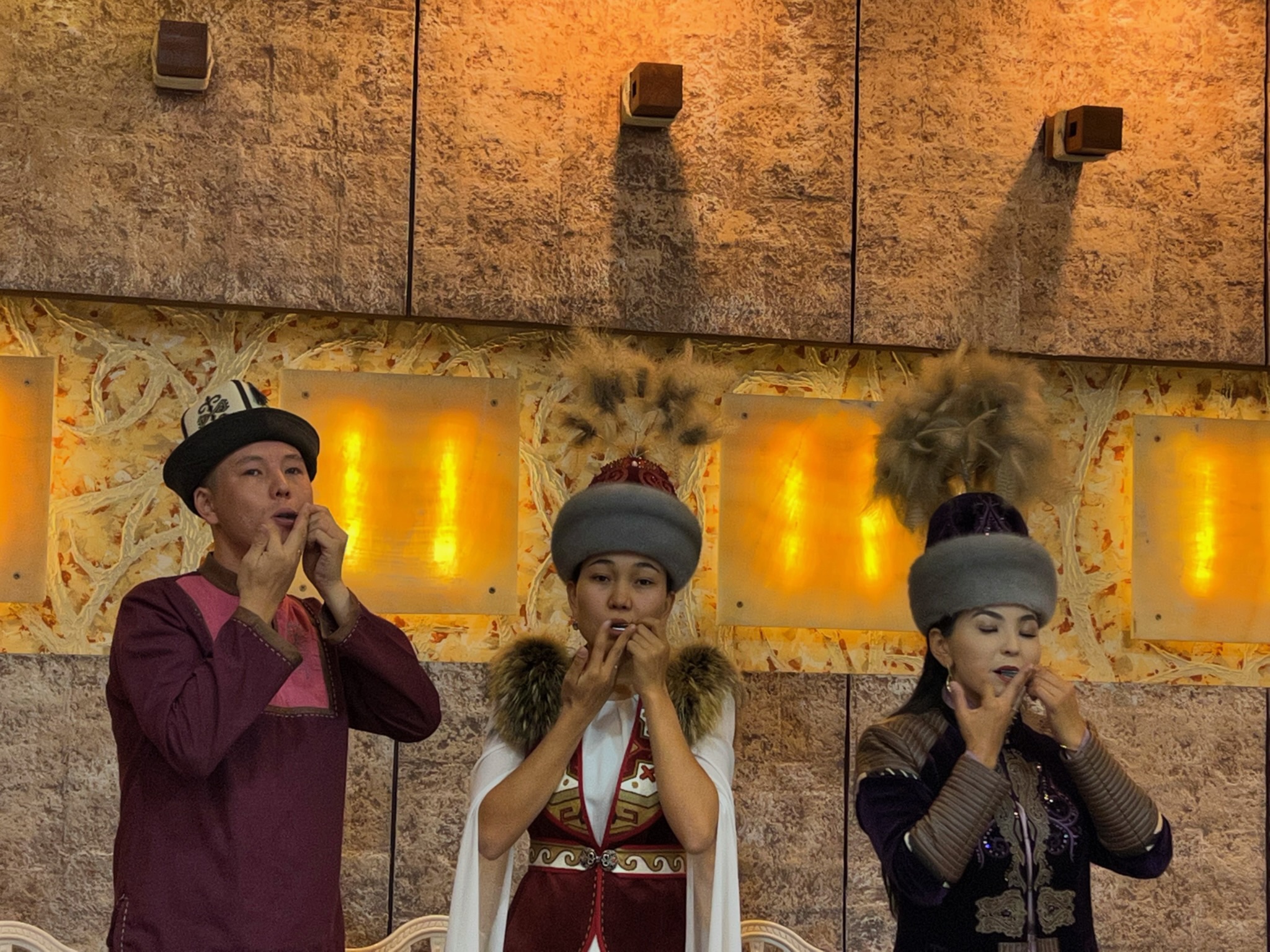
Our evening is amid the music and song of the Kyrgyz. A quartet of players, using traditional wind, stringed and percussion play for us. One man does a rather dramatic storytelling. It is spoken in Kyrgyz so not a word is understood. The story is about the birth of a child and from the dramatic telling, I assume it was a tough birth.
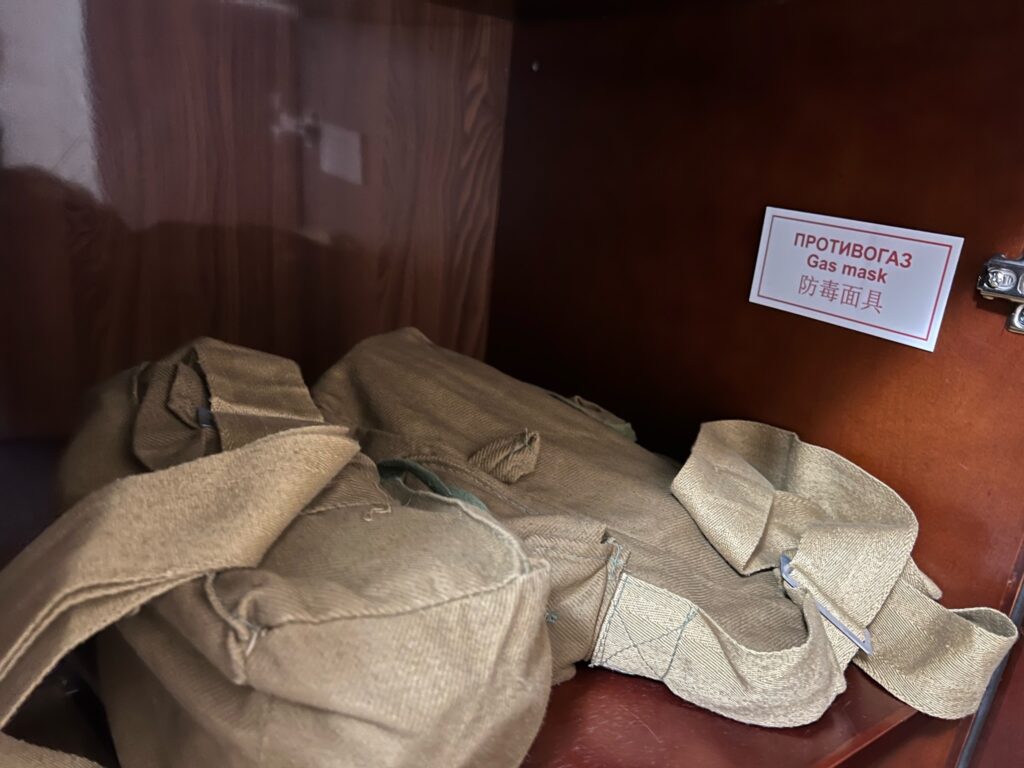
Tonight we eat at the hotel. Salad, shrimp and chicken pasta in pesto sauce, and a delicious creamy desert. We did not bring the gas mask down with us. Evidently our hosts are more worried about Dear Leader Kim than the US, and that might be a mistaken assumption.
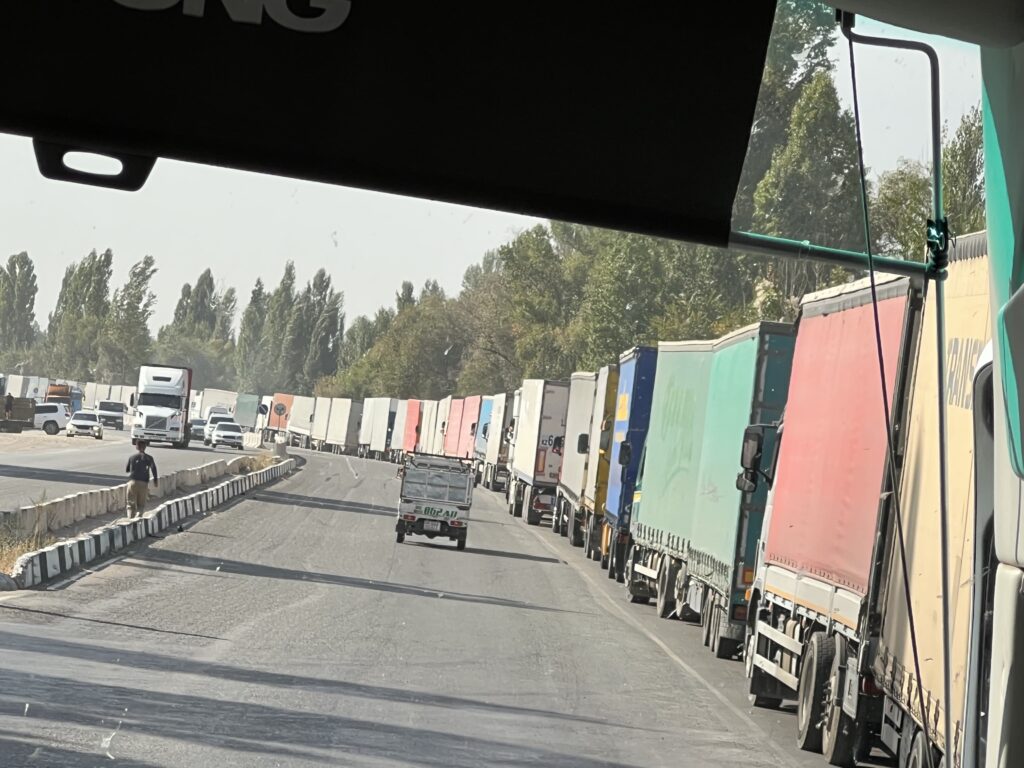
0 Comments